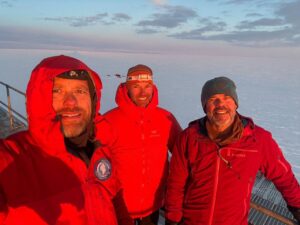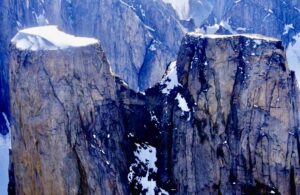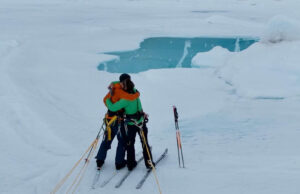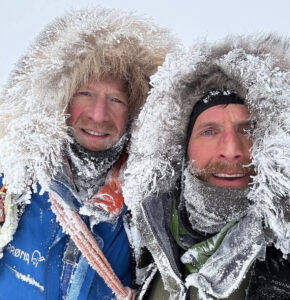A regional — read: very regional — Canadian television show called Land & Sea has been airing since the 1960s. It presents half-hour vignettes of life in Newfoundland and Labrador, a rugged province on the country’s east coast.
Newfoundlanders have always had to be tough and resourceful. Their Irish heritage and hardscrabble seafaring tradition give them a different style from people in other parts of the country. (Newfoundland only joined Canada in 1949.) You can see this unique character at play in Land & Sea, now that the episodes are available on YouTube.
This sample 1980 episode goes off the island of Newfoundland to the wild northern coast of Labrador, the mainland part of the province. It kicks off with a tribute to an Inuit man, previously featured on the program, who died in a blizzard earlier that year. Two other men also perished in the storm.
A late friend of mine, Auggie Anderson, was one of the survivors of that blizzard and used to tell me about it. They were out caribou hunting on snowmobiles on the open tundra above the town of Nain, in northern Labrador, where they all lived.
“We saw it coming but there was no time to do anything,” Auggie explained. “It hit us like a wall.”

Auggie Anderson. Photo: Jerry Kobalenko
Hunting easier nowadays
The three men who died succumbed to the cold almost immediately. Others survived, some by hunkering down in a shelter. Meanwhile, Auggie trekked for days to the coast to look for help and eventually found it.
Caribou hunting is easier for Inuit in modern times than it used to be. They have rifles and snowmobiles, although the snowmobiles in 1980 were not as reliable as they are today. Everyone had to know how to repair one themselves in the field. No one traveled alone; you needed a buddy in case your machine broke down irreparably. Satellite phones didn’t exist then.
At the time, Labrador’s George River caribou herd was the largest in the world, numbering about 800,000 animals. Hunting was good. But you often had to go up on the exposed tableland, where the caribou spent the late winter. There is no shelter there from storms.
Once, Auggie took me caribou hunting with him and his friends. I rode the komatik, or wooden supply sled, dragged behind the snowmobile. It was a rough ride over the hard, bumpy snow at 40 or 50kph. Sometimes, the komatik was airborne as I clung on desperately.
We drove 150km, then Auggie shot a caribou. We loaded it on the komatik and drove the 150km back to Nain. I sat on the dead caribou, which gave me more padding. Nevertheless, by the time we arrived, I was so beaten up that I felt I’d just gone 12 rounds with the heavyweight champion, who’d kicked me in the behind several hundred times for good measure.
Caribou populations are cyclical. Shortly after their 1980s peak, the numbers crashed. Why? Too many caribou for the meager arctic fare, disease, and a healthy population of wolves that grew in response to the earlier bounty of caribou.

Nain, Labrador today. Photo: Jerry Kobalenko
Few caribou these days
By 2012, there were 27,000 caribou left. By 2017, only 9,000. Then numbers dropped even lower. The Inuit of northern Labrador have voluntarily refrained from hunting them to give the herd a chance to recover. The George River herd has not yet begun to bounce back but is still hanging on.
Times have changed since the film, but Inuit still travel out on the land in harsh weather, to hunt seals and cut timber to bring home for firewood.
Once, Auggie got himself a fancy new snowmobile. The machines only lasted a couple of years in that rough, frigid environment, so new purchases were common. He was taking it for a test spin on the sea ice near town. He hit a bump, fell off, hit his head, and died.
I’ve kept in touch with his widow Rita, but I still miss my old friend. When I was planning my first expedition, he gave me some valuable survival advice while telling me the story of his own survival during that blizzard.
This little film captures the mood of an Inuit caribou hunt pretty well, minus the idiotic white guy clinging to the komatik for dear life.






